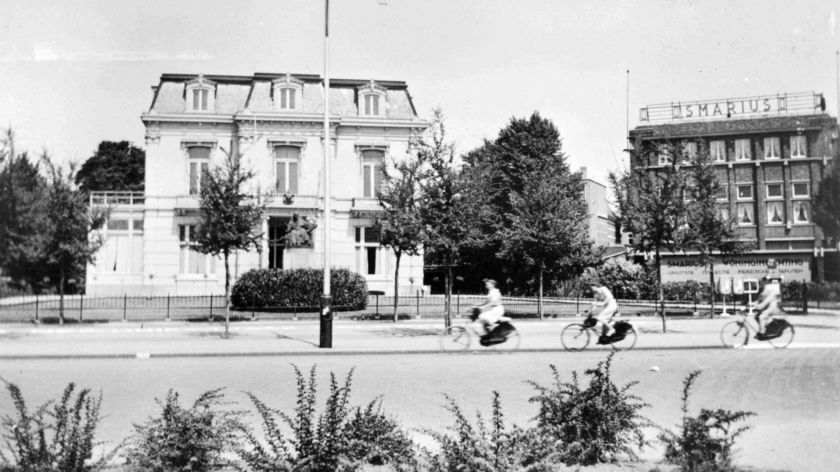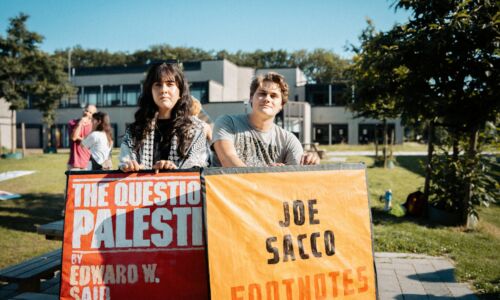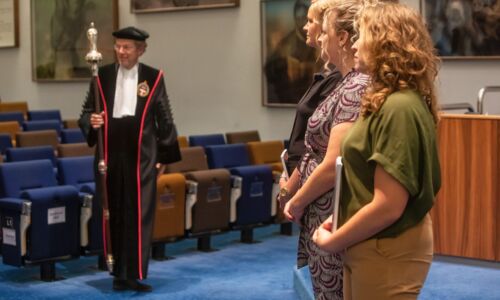Photo series – Then & Now (1): The main building in 1923
-
 Het hoofdgebouw in de jaren twintig van de vorige eeuw. Foto: Fotocollectie Regionaal Archief Nijmegen
Het hoofdgebouw in de jaren twintig van de vorige eeuw. Foto: Fotocollectie Regionaal Archief Nijmegen
Back in the day, the university did not have a campus. Instead, its education buildings were spread out across the city. In honour of Radboud University’s 95th anniversary, Vox is exploring the image archives to learn more about its history. What has changed? Today’s subject: the Hoofdgebouw (main building).
Where better to start a series about the history of Radboud University (formerly known as the “Roman Catholic University”) than with one of its first buildings? Before the Second World War, a stately building along the Keizer Karelplein, at the site of the current ABN AMRO bank, had served as the university’s main building since 1923. Back then, there were no cars on that street.
The Hoofdgebouw housed the office of the secretary of the board of trustees, the registrar’s office, and the senate room. For students, three other areas in the building were far more interesting: The Rector’s room, where all first-year students met the Rector Magnificus in person (!), the small lecture halls, and the faculty room, where they took their exams in suits. At the time, the university was still small; until the Second World War, it had, on average, around five hundred students and three faculties: Theology, Arts/Philosophy, and Law.
Conflict
For a long time, there was a lot of uncertainty about whether there would be a university in Nijmegen at all. After Nijmegen was selected by the Sint Radboud foundation over Tilburg, ‘s-Hertogenbosch, and Maastricht in 1922 as the location for a Catholic University, conflict erupted in the municipal council.
Catholics and non-Catholics in the council engaged in heated debates over Nijmegen’s candidacy. A vote took place on 7 February 1923. With sixteen votes in favour and fifteen against, half of the council was celebrating. After this, the building on the Keizer Karelplein was purchased from De Gruyter family of grocers, and with that, the Hoofdgebouw came into being. The university opened officially on 17 October.
In April 1943, the university refused to comply with the plans of the occupying forces, which involved the students pledging allegiance to the Nazi Reich, and temporarily closed as a result. Rector Magnificus B.H.D. Hermesdorf personally placed the announcement of the university’s closure in the hall of the main building, which was eventually converted into a German court of law. During the liberation of Nijmegen in September 1944, the Hoofdgebouw was damaged beyond repair. All that remained were ruins. The statue of Thomas Aquinas, however, installed in 1926, remained standing. It can now be found in front of the auditorium.
Many thanks to Jan Brabers, university historian. The photo of the present-day main building was provided by courtesy of Marjolein van Diejen.
Sources: Radboud in de Stad: Routeboekje, Huis van de Nijmeegse Geschiedenis



